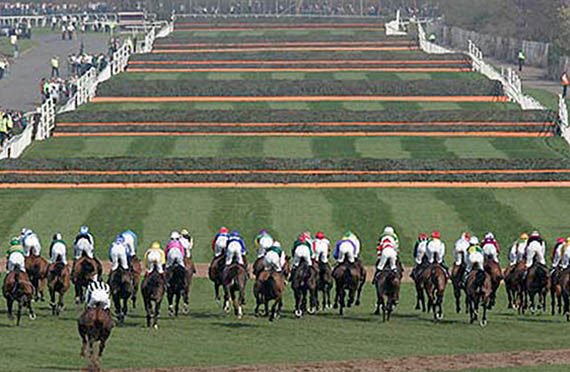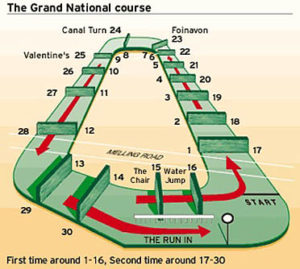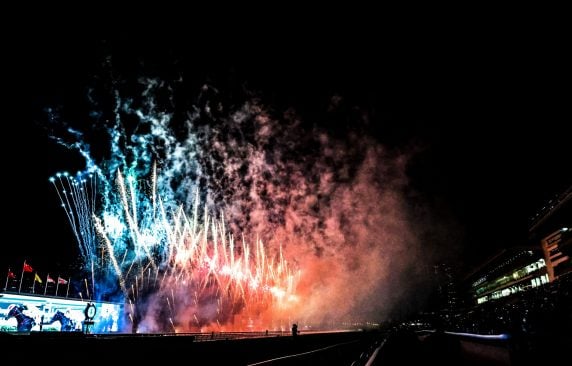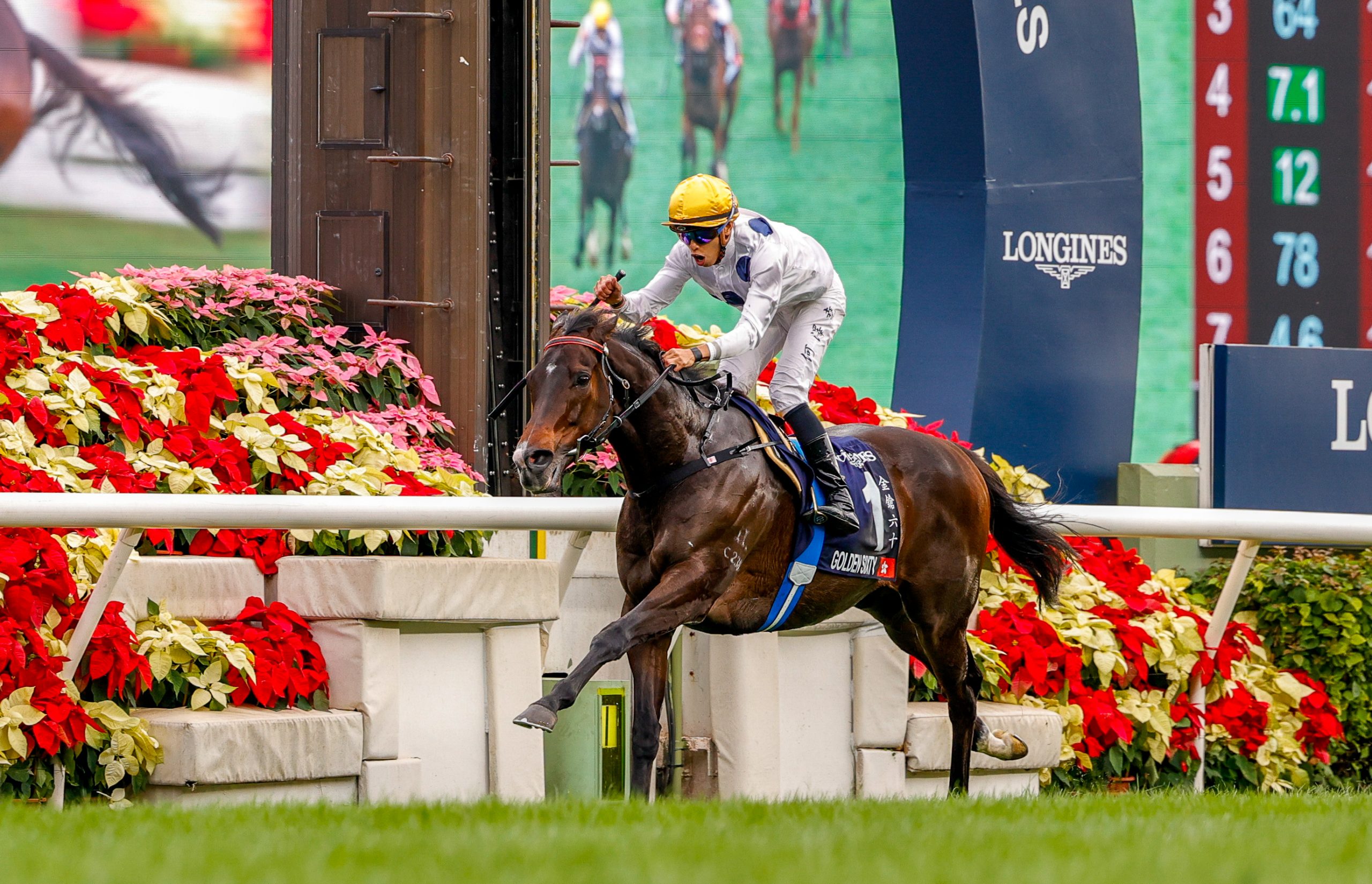
Grand National – the race that stops the English Nation, the John Smith’s Grand National
“Great things are done when men and mountains meet.” Blake wasn’t describing horse racing when he penned those immortal words, but he might as well have been. April heralds not only a visit from the Easter bunny, but also the annual pilgrimage to Aintree for the home of the race that stops the English Nation – the John Smith’s Grand National.
Saturday, 6th April will see the 166th renewal of the race. The BBC first broadcast the Aintree classic on 26th March 1960. During its 52 years of covering the race, it frequently notched a UK audience of more than 10 million and an estimated worldwide viewing figure of 500 million. In a break with tradition, the National will be televised on Channel 4 rather than BBC1 for the first time.
In even more ground-breaking news, after 4 fatalities and a public outcry in the last 2 years, the organisers have responded with a number of new safety initiatives, not least of which are the introduction of plastic birch poles. The new posts will bend and part on impact in a way that the old posts could not. The plastic birch is commonly used in schooling fences at training facilities, but it is the first time they will be used on a British racecourse under race conditions.
Even the three open-ditch fences, notably the famous Chair in front of the stands, have been softened, though their core will be made of real birch, not plastic. Those fences do not have the sloping take-off side of the others and must therefore be wider in order to support the spruce, wider than can presently be made in plastic.
In fact, Aintree has spent more than £1m over five years on various measures aimed at improving safety for the race’s participants, including a dedicated washdown area to cool the runners after the event. This benefits from technology used at last year’s Olympics, with the areas designed to fill a large tent with a cooling mist. Also, Aintree has completed a fully automated irrigation system that goes right around the two-mile circuit and will allow Tulloch to water the course on race-morning if need be.
Additionally, there will be 3 mounted helpers to help round up runners that become parted from their jockeys. Although there have been protests from the ‘traditional’ camp, who would prefer things to be left as they were, Andrew Tulloch, Aintree’s clerk of the course, says “We’re always looking to improve it and not stand still. From my perspective, the welfare of horse and rider is the single most important thing. The aim is to reduce the risk of injury to horses and jockeys, following four equine deaths in the past two Nationals.
In particular, it is hoped that we may see no more of an especially horrible species of fall, known as a “rotational”, caused by a horse’s back legs hitting the fence’s take-off side. Up to now, with very limited give in the obstacle, the collision would sometimes fling those hind legs up in the air, so that the horse’s whole weight would crash to earth on top of its head or neck. If a horse does trail a leg here, it will not be suddenly stopped, it will be slowed down.
The plastic birch will be topped with 14 to 16 inches of the familiar spruce, so that each obstacle will be as big and will look exactly the same as last year. There is a test about it but it needs to be a fair test. I think, like everything, things move on, new materials have become available,” but he maintains, “The essence of the race is the same.”
A few facts

Grand National Course
The fence-building programme starts approximately three weeks before the meeting is scheduled, with around 150 tonnes of spruce branches sourced and transported from forests in the Lake District. Each fence is made from a wooden frame and covered with the distinctive green spruce.
The race is run around the flat 2 ¼ mile circuit at Aintree, known as The Mildmay course. The racecourse is triangular in shape with 16 fences. Runners complete 2 circuits of the course, and jump all fences twice except The Chair (fence 15) and the Water Jump (fence 16), making for a total of 30 jumping efforts. The total race distance is 4 miles, 3 furlongs and 110 yards, the longest trip in National hunt racing and the prize money this year is £975,000.
Becher’s Brook, the sixth fence on the first circuit, was named after Captain Martin Becher who was unseated from his mount, Conrad, and fell into the ditch when leading in the first ever Grand National in 1839. He took it in good humour, reflecting that “Water tastes disgusting without the benefits of whisky!” and the obstacle has carried his name ever since.
Fence 15, The Chair, is the tallest and longest fence on the track. It measures 5ft 2 inches in height with a 6ft long, 3 ft deep ditch on the take-off side. To add to the level of difficulty, the course narrows at this fence, so there is competition for much needed room. Fortunately they only face The Chair once.
Stories
Last year’s National was won by Neptune Collonges, in the closest finish in the race’s 173-year history. The grey, ridden by Daryl Jacob, got up in the last stride to win after a photo finish, giving champion trainer Paul Nicholls his first Grand National winner. It made for a heck of a story. Owner John Hales had entered another grey horse, One Man, for the 1998 Melling Chase.
One Man had won 20 of his 34 starts and came to Liverpool off the back of his most prestigious career victory in the two-mile Queen Mother Champion Chase at Cheltenham. He took a crashing fall in the Aintree back straight and paid the ultimate price. For someone to lose a horse to Aintree, and then come back and have another go, must have taken some guts and determination, so last year’s short head victory was particularly poignant. Hales said simply “Aintree owed me one” and retired Neptune Collonges straight after the race.
In many ways, it is stories such as those that make the Grand National so special. Having won it an amazing 3 times, Red Rum is the name most associated with the great race and is buried at the Aintree winning post. His epitaph reads “Respect this place, this hallowed ground, a legend here, his rest has found, his feet would fly, our spirits soar, he earned our love for evermore”.
His charismatic trainer Ginger McCain (who once said that he wanted to be buried alongside Red Rum !) was 80 years old when he went to join his great champion in the racetrack in the sky on 19 September 2011. Notoriously outspoken, he made headlines in 2005 when he suggested “horses do not win Nationals [when] ridden by women” and he called Carrie Ford (who went on to finish fifth in that year’s race) “a broodmare”.
He dismissed one female starter as a “silly cow with the hat and the skirt” and entirely failed to redeem himself by remarking “there are women I respect. I can’t think of any, apart from the Queen, but there must be some!” Fortunately, only the most determined to be offended took him seriously.
Manifesto ran the race 8 times, winning it twice and finishing 3rd on three other occasions. Aldaniti and Bob Champion gave us another legend. Jenny Pitman was the first successful woman trainer, winning it in 1983 with Corbiere and again with Royal Athlete in 1995. In 2009, Venetia Williams became the second woman to saddle a National winner with Mon Mome, 11 years after competing in the race herself.
The 1967 National played host to one of the most remarkable results when a loose horse veered across the leading group just ahead of the 23rd fence, causing the majority of the horses to either stop, refuse or unseat their riders. 100/1 outsider Foinavon (whose owner gave him so little chance that he’d gone to Worcester for the day), had been lagging behind, which gave his jockey time to steer him wide and they made a clean jump. Despite 17 jockeys remounting and giving chase, Foinavon hung on for victory. The 7th/23rd fence was officially named the Foinavon Fence in 1984.
The 1993 National was declared “the greatest disaster in the history of the Grand National.”
The starting tape failed to rise correctly and a jockey got tangled in the starting tape. A false start was declared, but lack of communication resulted in 30 of the 39 jockeys setting off. Course officials tried to stop the runners by waving red flags, but many jockeys thought that they were protesters (some had invaded the course earlier) and continued. Seven horses ran the course in its entirety, forcing a void result.
Amateur Attraction
The Grand National is of course also one of the rare major sporting events in which amateurs still can, and do, take on professionals. This applies to both trainers and jockeys and it has been won no less than 41 times by an amateur jockey. The last time was in 1990, when Marcus Armytage steered Mr Frisk home won in the fastest recorded time to date of 8m 47.8s.
However, some feel that the stories of those amateurs who don’t win are often even more interesting. Over the years the National has been attempted by the Duque de Alberquerque, Tim Durant, Aidan O’Connell and Brod Munro-Wilson – a mix of playboys and men who worked as deep sea divers for six months a year and spent the other six trying to win the National. And the amateur’s love affair with the Grand National continues, proven by 2011 runner-up Oscar Time, ridden by amateur jockey and millionaire businessman, Sam Waley-Cohen.
Last year was the closest a lady jockey has ever come to winning the National, with amateur Katie Walsh (sister to the famous Ruby) finishing 3rd on her father’s horse, Seabass. They will be joining the line-up again this year to have another go. Seabass started joint favourite last year, thanks almost entirely to bets of £5 or £10 each way all over Britain and Ireland with a lot of women and a lot of kids backing Seabass and his lady rider simply for the story. There is sure to be another surge of money this year too, matching hard cash with the sport’s emotional investment in the hope of a dream result.
“I know Seabass like the back of my hand, I’ve won races on him, and I ride him out every day. And there’s no extra pressure riding for Dad – in fact, it’s probably a bit easier riding for him. I know he’s not going to give out to me, whatever goes wrong. He’s been a great supporter and I love riding for him.” Ruby is expected to ride the current ante-post favourite, On His Own.
If the National needed a heart-warming story to rekindle the public’s affection last year, it needs one all the more in 2013 and with a little luck, this year’s race might just come up trumps. Imagine Ruby and Katie, on the first and second favourites, jumping the last alongside each other. Better yet, despite the fact it would have Mr McCain spinning in his grave, I think it would be rather nice to see the National won by a lady jockey for the first time!
Last year racing scribe Stephen Moss wrote “The Grand National is irrational, unpredictable, emotional, vivid, dangerous. It probably should not exist, yet it has enriched our imaginations.”
Whether it fires your imagination or your gag reflex, the 40 runners will face the starter at the South African time of 17:15pm. I’ll be hiding behind the couch!








